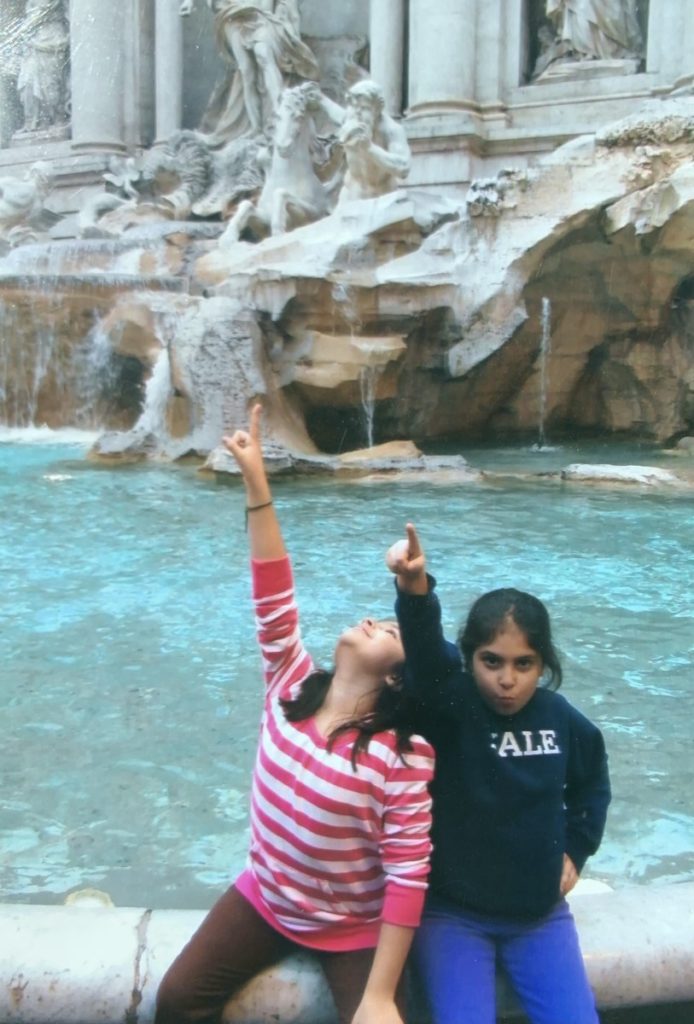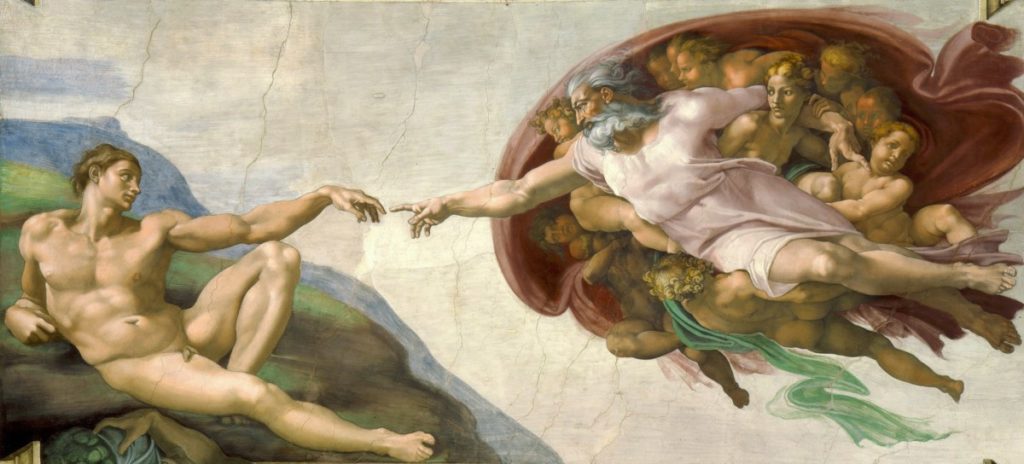When I was younger, my parents took my twin sister and me to Rome, Italy. When I arrived, the only things on my mind were pizza, pasta, and gelato, but one event of this trip that has always stuck with me was visiting the Sistine Chapel. I remember craning my neck to see the intricate paintings on the ceiling and awing at how detailed the fresco was. At the time, my brain glossed over the artistic liberties Michelangelo took as I was more confused as to how he spent years looking up as he painted on the ceiling. Now as a young adult, I understand more about what the details actually meant artistically, theologically, and anatomically.

Michelangelo di Lodovico Buonarroti Simoni was a man of many talents. Not only was he a famous sculptor, painter, and poet, but he was also well versed in the anatomy of the human body. Now, you might be wondering why an artist would ever choose to learn about science (and if that is the case, then you are probably not in Dr. O’Toole’s Biology 190 seminar), but Michelangelo was the original renaissance man. His interest in human anatomy began after he dissected bodies in the Monastery of Santo Spirito in Florence at the age of 18. Although this sounds super creepy, at the time it was not uncommon for artists to study the human body in this way. He used this time to not only learn about the anatomy of the human body but also the pathology of how the body works. This newfound interest in anatomy changed the way young Michelangelo thought about architecture and art. Small details in the body such as tissues or veins were somehow connected to different techniques of building or painting. It is evident that throughout his different works, Michelangelo takes extremely close attention to detail especially in incorporating different aspects of the body into his piece.
Michelangelo’s “Creation of Adam” depicts God reaching out to Adam. If you look closer into the details of the image, God and his angels are surrounded by the anatomical structure of the brain. Even a blue cloth coming from around God can be compared to the brain stem. My personal interpretation of this is that Michelangelo refers to God as the creator of all thoughts and actions that humans have which is similar to the controlling processes of the brain. In addition to the “Creation of Adam”, another painting in the Sistine Chapel titled “The Separation of Land and Water” can resemble not only the structure but the function of the kidney. God is reaching out to touch the water almost as if he were cleaning it; this is similar to the function of the kidney which filters the waste out of our urine and blood (Straus et al. 2002). In a study conducted by the Journal of the Royal Society of Medicine titled “Michelangelo and Medicine”, researchers used content analysis to really decide if Michelangelo knew the complexities of the human body. His works such as “Creation of Adam” and “The Separation of Land and Water” support the idea that Michelangelo had a strong understanding of the human body, and he was able to determine both the structure and function of different organs during his lifetime (between 1475-1564 AD).

According to the study “Michelangelo and medicine”, it is believed that Michelangelo used these references to anatomy in the Sistine Chapel as a way to display the “divine parts” that God has crafted for them. He used his time dissecting bodies for the local hospital to inform his art and enrich his theological views. I find it very admirable that Michelangelo furthered his knowledge to add such finite detail to his art. The finite details, however, do much to add meaning to his art. In his lifetime, the functions of the brain and kidney were probably not common knowledge, but as art and science evolve we can see both subjects grow due to small details in Michelangelo’s work. Although at the time, I was not able to appreciate the ceiling of the Sistine Chapel for what it really was, it is now one of my personal beliefs that Michelangelo was one of the most advanced artists of his time, and he raised the bar for modern art. Br combining science and art he brought two fields together which had rarely been intertwined in the past. This was a risky move given the strict religious views and lack of separation between church and state which he lived through. Michelangelo is truly one of the best representations of a renaissance man.
Work Cited
“The Creation of Adam.” Wikipedia, Wikimedia Foundation, 15 Sept. 2020, en.wikipedia.org/wiki/The_Creation_of_Adam.
Embuscado, Rain. “The Technique Behind Michelangelo’s Sistine Chapel.” Artnet News, Artnet News, 28 July 2015, news.artnet.com/art-world/surprising-technique-behind-michelangelos-sistine-chapel-design-318534.
Gilbert, Creighton E. “Michelangelo.” Encyclopædia Britannica, Encyclopædia Britannica, Inc., 2 Mar. 2020, www.britannica.com/biography/Michelangelo.
“Michelangelo: Anatomy as Architecture, Drawings by the Master.” Muscarelle Museum of Art, muscarelle.wm.edu/exhibition_record/anatomy-architecture-drawings-master/.